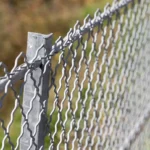When it comes to keeping your home warm during the colder months, a furnace plays a crucial role in ensuring comfort and safety. Whether you’re replacing an old furnace or installing a brand-new one, the process can be a significant investment in both time and money. Proper furnace installation is not only essential for optimal performance but also for energy efficiency and safety. In this detailed guide, we’ll walk you through the furnace installation process, highlight the key considerations, and offer tips on how to make the most of your investment.
Why Furnace Installation Matters
A furnace is a key component of a home’s heating system, especially in areas with harsh winters. Furnace installation can affect:
- Energy Efficiency: A properly installed furnace operates more efficiently, potentially lowering your energy bills and reducing wear and tear on the system.
- Safety: An improperly installed furnace can pose significant safety risks, including gas leaks, carbon monoxide poisoning, and fire hazards.
- Comfort: Correct installation ensures that your furnace heats your home evenly and reliably.
- Longevity: Quality installation can extend the lifespan of your furnace, helping you get the most out of your investment.
With so much at stake, it’s important to understand the steps involved in furnace installation and the factors you need to consider when selecting and installing a furnace.
Step-by-Step Guide to Furnace Installation
Step 1: Choosing the Right Furnace
Before you even begin the installation process, it’s important to choose the right furnace for your home. Several factors will determine the best option for your heating needs:
- Fuel Type: Furnaces can run on various fuels, including natural gas, oil, propane, and electricity. Gas furnaces are the most common and typically offer the best energy efficiency.
- Furnace Size: Choosing the right furnace size is essential. A unit that is too large can lead to frequent cycling and energy waste, while one that is too small won’t heat your home adequately. You should have a professional conduct a Manual J load calculation, which assesses your home’s heating requirements based on size, insulation, and climate.
- Energy Efficiency: Furnace efficiency is rated by its Annual Fuel Utilization Efficiency (AFUE). The higher the AFUE, the more efficient the furnace. Modern furnaces typically have an AFUE of 80-98%.
- Budget: Consider your upfront costs and long-term energy savings. A higher-efficiency furnace might cost more initially but could save money on energy bills over time.
It’s highly recommended to consult with a licensed HVAC professional when selecting your furnace to ensure you make the right choice for your home.
Step 2: Preparing for Installation
Furnace installation is a complex process that requires professional knowledge and skills. Here’s what you should do to prepare:
- Clear the Installation Area: Ensure the area where the furnace will be installed is clear of furniture, obstructions, and debris. This will give the installer space to work and ensure the furnace is properly placed.
- Shut Off Gas and Electricity: If you’re replacing an existing furnace, make sure the gas and electricity are turned off to avoid any accidents.
- Check the Venting System: Furnaces require proper venting to expel gases safely. If you’re installing a new furnace, ensure the existing venting system is up to code, or be prepared to install new ducts and vents.
- Obtain Permits: In many jurisdictions, furnace installation requires a permit. Make sure to check local codes and ensure that your contractor obtains the necessary permits before starting.
Step 3: Furnace Removal (If Replacing an Existing Furnace)
If you are replacing an old furnace, the first step is to remove the old unit. This process can involve:
- Disconnecting and capping the gas line (if applicable)
- Disconnecting the electrical supply
- Removing the old ducts and vents
- Disconnecting the furnace from the thermostat
- Safely disposing of the old furnace
It’s important to have a professional handle this process to ensure the safe removal and disposal of the unit, as well as the proper disconnecting of utilities.
Step 4: Furnace Installation
With the new furnace ready for installation, the process generally involves the following:
- Placing the Furnace: The new furnace is positioned in the designated space. This space should have adequate clearance for airflow and maintenance.
- Connecting the Gas Line: For gas furnaces, a licensed professional will carefully connect the gas line to the furnace and check for any leaks.
- Wiring the Furnace: The furnace must be connected to the electrical supply. A qualified technician will wire the unit to ensure it functions correctly.
- Ductwork Connection: Ducts from the furnace to the vents in your home will be connected. Proper sealing of ducts is essential to avoid air leakage, which can reduce efficiency.
- Venting: The furnace will need to be vented to expel exhaust gases safely. If you are installing a high-efficiency furnace (90% AFUE or higher), it will likely require a new PVC venting system.
- Thermostat Installation: If you’re upgrading your thermostat or installing a new one, it will be connected to the furnace and programmed for optimal heating.
Step 5: Testing and Calibration
Once the furnace is installed, it’s time to test and ensure everything is working correctly. A professional will:
- Check for Gas Leaks: The gas line will be inspected for any leaks, and pressure will be tested.
- Test Furnace Operation: The furnace will be powered on to ensure it runs efficiently, heats properly, and doesn’t produce unusual sounds or odors.
- Check Airflow: The airflow should be tested to ensure proper distribution of heat throughout the home. If airflow is restricted, it can lead to uneven heating or increased energy consumption.
- Check the Thermostat: The thermostat will be calibrated to make sure it communicates effectively with the furnace.
Post-Installation Considerations
Once the furnace is installed and fully operational, there are a few important steps to consider:
1. Regular Maintenance
To ensure your furnace runs smoothly for years to come, regular maintenance is key. This includes:
- Changing the air filter: Dirty filters reduce airflow and efficiency. Change the filter every 1-3 months, depending on the type.
- Annual Inspections: Have your furnace professionally inspected and serviced annually to check for any wear and tear, gas leaks, or efficiency issues.
- Cleaning the ducts: Over time, dust and debris can accumulate in the ductwork, reducing airflow. A professional duct cleaning is recommended every few years.
2. Monitoring Furnace Performance
In the first few weeks after installation, monitor how your furnace performs. If you notice any issues, such as strange noises, uneven heating, or higher-than-usual energy bills, contact your HVAC technician for an inspection.
Conclusion: Why Professional Furnace Installation Is Essential
Furnace installation is a complex and potentially dangerous job that should never be attempted by amateurs. Proper installation ensures the safety, efficiency, and longevity of your heating system, which can save you significant money in the long run. Working with a qualified HVAC professional ensures that your furnace is properly sized, installed according to code, and ready to provide reliable heat for many years.
By choosing the right furnace, preparing for the installation process, and scheduling regular maintenance, you can enjoy a warm and comfortable home all winter long.
If you’re considering furnace installation, don’t hesitate to reach out to a professional HVAC contractor for advice, quotes, and installation services. The investment in a quality furnace and expert installation will pay off in energy savings, comfort, and peace of mind.






